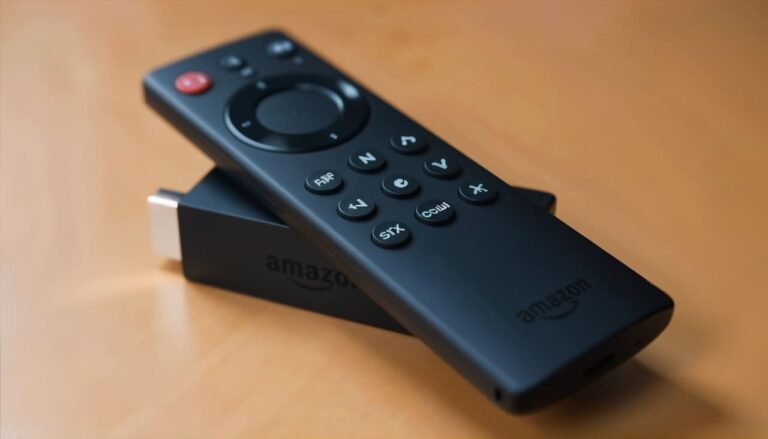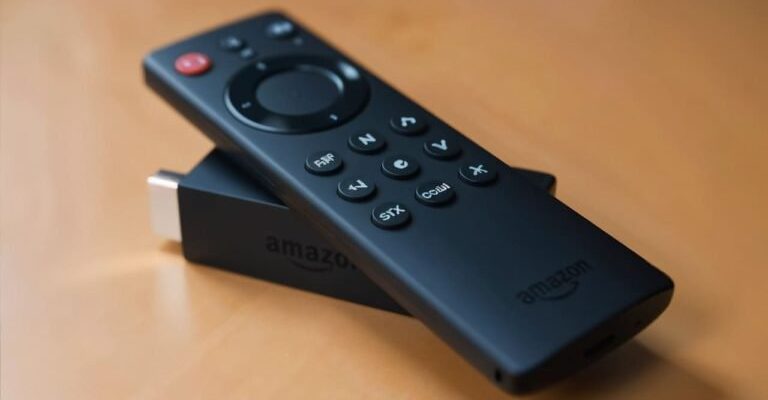
Whether you’re using the classic Fire TV Stick remote, the flashier Alexa Voice Remote, or one of those fancy universal remotes with a zillion buttons, all these gadgets run into weird hiccups now and then. Lost connection, stuck buttons, or the dreaded “Why isn’t it working at all?” moment. If technology had a sense of humor, it would definitely play pranks with streaming remotes.
So, if your Fire TV remote suddenly stops listening, goes wonky after a battery change, or just feels off, you’re not alone. Let’s unravel some of the most common issues people run into—and, more importantly, how to actually fix them—without turning your living room into a remote graveyard.
Remote Not Responding At All
Let me paint a picture: you plop onto the couch, thumb on the remote, aiming for maximum comfort, hit the home button—and nothing happens. Nada. It’s enough to make you question if you’re being haunted. The most common cause? **Dead batteries**. Sure, it sounds obvious, but you’d be shocked how often even tech-savvy folks (myself included!) forget to check the basics first.
If a battery swap doesn’t do the trick, sometimes the remote just loses its connection with the Fire device. This is more common than you think, especially if the remote’s taken a tumble or someone (*cough* me *cough*) spilled soda near the electronics. The way to fix this is usually to re-pair the remote. Hold the Home button for about 10 seconds, wait for the blinking blue light, and see if your screen responds. If that doesn’t work, unplug your Fire TV device for 30 seconds and try again.
Pro tip: If your remote refuses to re-sync, try removing the batteries, waiting a full minute, and popping them back in before holding the Home button. Sometimes, electronics need a little “reset” just like us after a long day.
Batteries Drain Way Too Quickly
You just replaced the batteries, and now—what’s this? The remote is dead again a week later? That’s honestly more annoying than the remote not working at all. Amazon Fire remotes are a bit notorious for chewing through batteries faster than you’d expect. Sometimes, it’s not even the battery’s fault.
Here’s the thing: certain models, especially the Alexa-enabled ones, stay active to listen for voice input. That constant readiness can sap battery life. Using poor-quality or off-brand batteries can make things way worse. I once tried the “cheap batteries in bulk” hack and quickly learned my lesson. Stick to reputable brands, ideally alkaline.
You might be wondering if there’s a way to make batteries last longer. Unpairing the remote when you’re not using the device for extended periods (like vacations), or disabling certain features (like unnecessary voice functions), can help. But honestly, always keep a backup set of batteries handy—just in case.
Remote Suddenly De-Syncs or Won’t Pair
Pairing issues feel like the ultimate tech test: if the remote isn’t talking to your Fire Stick, everything else falls apart. This happens after resets, firmware updates, or sometimes for no obvious reason at all. It’s like the remote and your Fire TV decide to take a break from each other.
To **re-sync your Fire TV remote**, press and hold the Home button for 10 seconds. Watch for the LED indicator to blink. Sometimes, it can take a couple tries, so don’t lose hope if it doesn’t work immediately. If you’re still out of luck, remove the remote batteries, unplug the Fire TV device, plug it back in, then reinsert the batteries and try again.
If none of that brings peace, you can use the Fire TV app on your phone as a temporary remote. It’s not as satisfying as pressing real buttons, but it beats yelling at your TV. For truly stubborn remotes, a factory reset might be needed (hold Back + Menu + Left for 15 seconds), but beware: factory resets will wipe any custom settings.
Buttons Feel Sticky or Don’t Work
Ever had a remote button that feels like it’s stuck in molasses? Or worse, no matter how hard you press, the device barely registers it? Sticky buttons are usually a sign of grime build-up (we’ve all had popcorn fingers at some point), or once in a while, a manufacturing issue.
Cleaning the remote makes a surprising difference. Pull out the batteries, use a slightly damp microfiber cloth on the exterior, and gently work around the buttons. For really stubborn gunk, a cotton swab dipped in rubbing alcohol does wonders. Just don’t douse the remote—electronics and liquid don’t mix well.
If cleaning doesn’t restore full power, it’s possible the remote’s circuit board has an issue. At that point, calling Amazon support or replacing the remote may be the best bet. Seriously, some things aren’t worth the stress.
Strange Lag or Delays in Response
Ever pressed a button, counted to three in your head, and then watched the cursor finally move? Lag is the enemy of a good Netflix binge. Most of the time, remote lag comes down to weak signal or interference, especially if your setup has walls, cabinets, or other electronics between the remote and the Fire TV.
Bluetooth interference can also cause problems. Fire TV remotes generally use Bluetooth, not infrared, which means they don’t need a direct line-of-sight but can get tripped up by WiFi routers, speakers, or gaming consoles in close proximity. Try moving potential sources of interference, or even just sitting a little closer to the device.
Sometimes the Fire TV device itself is bogged down. A quick reset—unplugging it for 30 seconds—often clears up lag. If you’re noticing consistent slowness, check for software updates on your Fire TV. Outdated firmware can cause all sorts of odd behavior.
Voice Commands Not Working
If you’ve ever tried giving Alexa a command through your Fire TV remote only to get stone-cold silence, you know the struggle. The voice feature is fantastic—when it actually works. Common causes? Microphone blockages (crumbs love to hide in those tiny holes), connectivity issues, or, believe it or not, software glitches.
First, check if the microphone button lights up when pressed. If it doesn’t, the batteries might be low, or the button could be stuck. Try cleaning around the mic with a soft, dry toothbrush (seriously, it works wonders). If it’s lighting up but Alexa isn’t listening, your Fire TV might need to be rebooted or reconnected to WiFi.
For stubborn cases, try **resetting your remote** (Back + Menu + Left) or re-pairing it. Voice commands also require an active Amazon account and working internet, so double-check your device’s settings if things are still wonky.
Fire TV Remote Code and Universal Alternatives
You might be pondering, “What if I just used a universal remote instead of the original Fire TV one?” It’s a solid backup plan, especially if your pet likes chewing electronics (speaking from experience). Universal remotes often need to be programmed with a specific **remote code** to work with your Fire streaming device.
While Amazon doesn’t always publish official remote codes, many universal remotes come with lists—look for the “streaming device” or “Amazon” section in the manual. Some remotes have an auto-scan function, which cycles through codes until one clicks. Not all universal remotes support Fire TV, so check compatibility online before buying.
The Fire TV app is a handy workaround too. You can install it on your phone, pair it over WiFi, and control everything just like with the physical remote. It even supports voice searches, which is wild. Honestly, it’s way less satisfying than mashing real buttons, but it’ll save your sanity in a pinch.
When It’s Time to Replace Your Fire TV Remote
At a certain point, you might be clinging to a remote that’s just plain done. If you’ve tried all the troubleshooting steps—battery swaps, resets, app backup, cleaning, re-pairing, ritual dances—and the thing still refuses to obey, it’s probably time for a replacement.
Replacement Fire TV remotes aren’t too pricey, and you can choose between different models. If you really want to future-proof, spring for the newer Alexa-enabled versions. They usually sync up automatically, but if not, Amazon’s pairing instructions are pretty clear.
Damaged remotes, especially those that have survived a drop in the toilet (don’t ask), are rarely worth saving. Sometimes, starting fresh is the fastest way back to streaming bliss.
Wrapping Up: Getting Back to Streaming Bliss
Look, no one wants to wrestle with a stubborn Amazon Fire TV remote when there’s popcorn to be eaten and shows to binge. The good news? Most remote problems are pretty fixable with a little patience and some common-sense troubleshooting. From dead batteries and pairing headaches to sticky buttons and lag, it really does help to know you’re not alone in these battles.
Whether you decide to revive your original remote, switch to the app, or invest in a slick new universal model, knowing how these devices work—and what causes their quirks—makes everything less intimidating. Here’s hoping your next movie night goes off without a hitch, and your remote stays loyal. And hey, keep some extra batteries close by, just in case.
